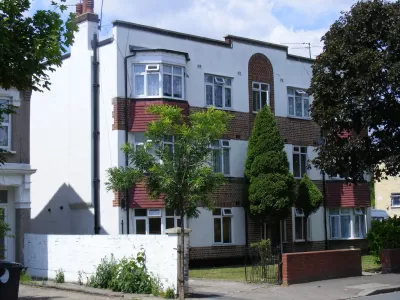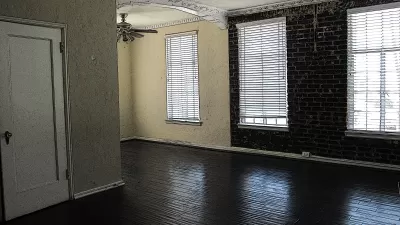Federal funds meant to help renters during the pandemic are still stuck in bureaucratic limbo as the end of the latest eviction moratorium looms in early October.

Although Congress allocated $46 billion in rental assistance in the last two COVID-19 stimulus packages, writes Annie Nova, "just around $4.2 billion of that money has reached households, according to a new analysis by the National Low Income Housing Coalition."
Distribution has varied widely in different states: "Texas has already managed to distribute more than half of its first round of federal rental assistance, while South Carolina has given out less than 2%." Throughout the U.S., "programs are understaffed and overwhelmed by the volume of applications. Insufficient outreach and arduous documentation requirements have also been barriers. A recent study by the Urban Institute found that fewer than half of renters even know about the federal assistance." The process can also be prohibitively complicated. "Andrew Aurand, vice president for research at the housing coalition, said he ran into one application that was 45 pages long. Another required renters to document their income over the last six months."
Recently, renters got a short reprieve with an extended eviction moratorium that ends on October 3, but housing advocates say getting rental assistance to those who urgently need it is the only way to prevent a future wave of evictions and displacement.
FULL STORY: This map shows how much rental assistance states have distributed

Alabama: Trump Terminates Settlements for Black Communities Harmed By Raw Sewage
Trump deemed the landmark civil rights agreement “illegal DEI and environmental justice policy.”

Planetizen Federal Action Tracker
A weekly monitor of how Trump’s orders and actions are impacting planners and planning in America.

Why Should We Subsidize Public Transportation?
Many public transit agencies face financial stress due to rising costs, declining fare revenue, and declining subsidies. Transit advocates must provide a strong business case for increasing public transit funding.

Understanding Road Diets
An explainer from Momentum highlights the advantages of reducing vehicle lanes in favor of more bike, transit, and pedestrian infrastructure.

New California Law Regulates Warehouse Pollution
A new law tightens building and emissions regulations for large distribution warehouses to mitigate air pollution and traffic in surrounding communities.

Phoenix Announces Opening Date for Light Rail Extension
The South Central extension will connect South Phoenix to downtown and other major hubs starting on June 7.
Urban Design for Planners 1: Software Tools
This six-course series explores essential urban design concepts using open source software and equips planners with the tools they need to participate fully in the urban design process.
Planning for Universal Design
Learn the tools for implementing Universal Design in planning regulations.
Caltrans
Smith Gee Studio
Institute for Housing and Urban Development Studies (IHS)
City of Grandview
Harvard GSD Executive Education
Toledo-Lucas County Plan Commissions
Salt Lake City
NYU Wagner Graduate School of Public Service





























